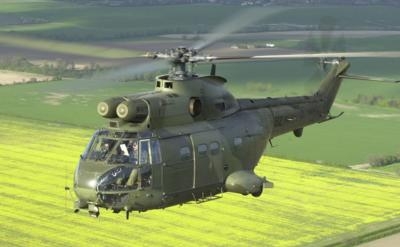Sat, Feb 13, 2021
AD 2021-04-04 Retains The Requirements Of AD 2020-19-02 And Also Clarifies The Applicability
The FAA is superseding Airworthiness Directive (AD) 2020-19-02, which applied to certain Airbus Helicopters (previously Eurocopter France) Model SA330J helicopters.

AD 2020-19-02 required repetitively inspecting affected tail rotor (T/R) blades and depending on the inspection results, repairing or replacing the T/R blade. AD 2020-19-02 also prohibited installing an affected T/R blade unless it passed the inspections. This AD retains the requirements of AD 2020-19-02 and also clarifies the applicability, clarifies the affected T/R blades in the required actions, reduces a compliance time, and corrects the prohibition requirement. This AD was prompted by the determination that these corrections are necessary. The FAA is issuing this AD to address the unsafe condition on these products. This AD becomes effective March 1, 2021.
Supplementary Information: The FAA issued AD 2020-19-02, Amendment 39-21243 (85 FR 59416, September 22, 2020) (AD 2020-19-02), for certain Airbus Helicopters (previously Eurocopter France) Model SA330J helicopters. AD 2020-19-02 required, for each T/R blade part number (P/N) 330A12-0005-(all dash numbers) and 330A12-0006-(all dash numbers), repetitively accomplishing a visual and in-depth inspection for debonding and eddy current inspecting for a crack. If there was debonding within allowable limits, AD 2020-19-02 required repairing or replacing the T/R blade. If there was debonding that exceeded allowable limits or a crack, AD 2020-19-02 required replacing the T/R blade.
AD 2020-19-02 also prohibited installing an affected T/R blade unless it passed the inspections. AD 2020-19-02 was prompted by EASA AD No. 2016-0059-E, dated March 22, 2016 (EASA AD 2016-0059-E), issued by the EASA, which is the Technical Agent for the Member States of the European Union, to correct an unsafe condition for Airbus Helicopters (formerly Eurocopter, Eurocopter France, Aerospatiale) Model SA 330 J helicopters. EASA AD 2016-0059-E retains the requirements of Direction Générale de l'Aviation Civile (DGAC) France AD 87-032-052(B)R3, dated January 23, 1991, which it supersedes, and also mandates improved service instructions. EASA advises of two reports of cracked metal T/R blade skin, which subsequently led to rotor blade vibrations and forced landing of the helicopter. According to EASA, this condition, if not addressed, could result in additional occurrences of T/R blade structural damage, possibly resulting in significant vibrations and reduced control of the helicopter.
More News
The Airplane Made An Uncommanded Right Yaw And Roll, And He Was Unable To Maintain Control Of The Airplane On November 11, 2025, about 1750 central standard time, a Cirrus SR20, N8>[...]
Aero Linx: Florida Antique Biplane Association "Biplanes.....outrageous fun since 1903." That quote really defines what the Florida Antique Biplane Association (FABA) is all about.>[...]
Wind Shear Escape An unplanned abortive maneuver initiated by the pilot in command (PIC) as a result of onboard cockpit systems. Wind shear escapes are characterized by maximum thr>[...]
“Working closely with the Polish Armed Forces, we’re focused on disciplined execution to help enhance Poland’s defense capabilities and keep up with the strong de>[...]
Also: Bell 505 on SAF, NYPA Gets Flak For BizAv 'Abuse', FAA Venezuela Caution, Horizon Update Textron Aviation has confirmed it will be ending production of the Beechcraft Bonanza>[...]
 NTSB Prelim: Cirrus Design Corp SR20
NTSB Prelim: Cirrus Design Corp SR20 ANN's Daily Aero-Linx (11.30.25)
ANN's Daily Aero-Linx (11.30.25) ANN's Daily Aero-Term (11.30.25): Wind Shear Escape
ANN's Daily Aero-Term (11.30.25): Wind Shear Escape Aero-News: Quote of the Day (11.30.25)
Aero-News: Quote of the Day (11.30.25) Airborne 11.26.25: Bonanza-Baron Fini, Archer v LA NIMBYs, Gogo Loses$$$
Airborne 11.26.25: Bonanza-Baron Fini, Archer v LA NIMBYs, Gogo Loses$$$



